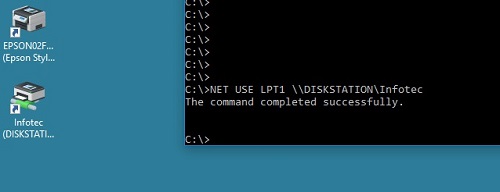AT36 / ATi Cal Fixture and Software
Hints and Tips on using the AT Calibration software and fixture for AT3600 + ATi
Click on a heading to expand or collapse the articles, section section.
Question:
How is the ATCAL software run on an XP PC?
Answer:
AT calibration software will run on an XP machine, it is important to choose the right GPIB IEEE card.
We recommend National instruments GPIB-USB-HS
http://www.ni.com/en-gb/support/model...
You must ensure that whatever the GPIB card / manufacturer chosen, that a DOS driver is available for this GPIB IEEE card.
The GPIB IEEE card chosen must have a DOS driver available, if not the AT Cal system will not run the DVM
The AT calibration software has been tested on a windows XP PC, with a NI GPIB-PCI card and HP3458A DVM.
A slight modification to allow DOS GPIB applications to run was made in the GPIB drivers as per National Instruments 'help' instructions.
The short answer is yes, as long as the PC is 32-bit not 64-bit.
A 32-bit version of Windows can run 16 and 32 bit DOS programs.
A 64-bit version of Windows can run 32 and 64 bit DOS programs. - NOT "AT CAL"!
This is what decides if you can run a 16-bit DOS program or not (ATCAL.EXE is a 16 bit DOS program)
It doesn't matter if you have Home, Pro, or Ultimate.
You will need to have Microsoft Windows “NTVDM” (NT virtual DOS Machine) installed.
https://en.wikipedia.org/wiki/Virtual_DOS_machine
Luckily, If you click on the ATCAL.exe, and you don’t have it installed, then windows will prompt you to install it and start the install process of NTVDM for you.
What about the GPIB card?
We have successfully run ATCAL under windows to using both the National instruments
A) GPIB-USB-HS adapter via a USB port
B) PCI-GPIB card-installed on the motherboard
In both cases remember to set the card to be IEEE address 0,and the HP3458A to be address 22.
This can be done and checked using NI MAX software, which come with the drivers.
What about RS232 comms to the AT3600?
Most USB-to-RS232 converters will work if your PC does not have a way RS232 port.
Check the USB RS232 port shows up under Windows Device Manager, and set the port number in ATCAL.EXE using the menu system.
Attached are some pictures showing the ATCAL working underWIN10.
See below linked document for tips on mapping a network printer to act as "LPT1" for printing certificates



USER PORT
The AT User port is used to control the AT CAL during calibration.
Obviously if your user port has any issues on a specific unit then this will cause problems.
The software allows you to run the USER PORT test on its own to check this.
Simply run the software,
select "2 Verification and extra tests" and then
"2 User port test" to run the 10 second user port pass/fail test.
The 9w9w user port cable is a straight through 9wM-9wM cable so can easily be replaced
Take care the cable is firmly fully inserted into both the AT CAL and AT3600 user port, and screwed in.
The Peripheral port (15way) can be tested on the same menu too, although this is only used for AC INTERFACE control, and is not needed to be connected for AT CAL at all, unless you are specifically want to run the peripheral port test.
For the DMM to AT CAL FIXTURE leads you should use two good quality twisted pairs for the signals
There is an off the shelf solution for this from POMONA - 2BA-36
Farnell # 2406065
NEWARK # 10M4191
https://www.newark.com/pomona/2ba-36/test-lead-grey-914-4mm-300v/dp/10M4191
Aa the AT CAL , HP3458A and AT make precision measurements of low mV signals, Earthing and environmental noise can be a factor in successful calibration.
Earthing
Make sure the mains supply for the HP3458, AND PC ANS AT3600/Ati are all earthed, and ideally from the same outlet supply to avoid long earth loops.
Isolation Transformer
Another best -practice tip is to make sure the HP/AT/PC are all isolated from any other EMC conducted noise by placing an isolation transformer on the mains supply.
We run all AT CAL in house on an isolation transformer to minimise pick up in the environment or mains fluctuations – this is just best practice rather than a definite need.
Many of our customers run the ATs in industrial environments near other equipment and in developing countries the quality of mains supply and earthing can be variable at best – the isolation TX is suggested to remove this as possible factor.
As an example, see this 4A 500VA isolation transformer
https://uk.rs-online.com/web/p/site-transformers/2604250
The AT self test is a general test of unit goodness, and we advise it is run every day for confidence.. In all cases the unit Power on Self test AND user invoked Self Test should pass.
However, usually though lack of regular calibration, the unit can fail and report "Calibration Error" .
This indicates that the unit has drifted, but that its basic operations is OK.
This is typically seen on Self test 5 6 7 + 8, which is V and I supply and measurement.
The AT CAL first step is to run self test and check it passes, but in these cases, you are already facing a fail, and cannot progress further.
To bypass this , run the software as normal, and as soon as the AT CAL controlled self test STARTS, press the STOP key on the AT36/Ati.
The software will then allow you to progress to calibration as normal, and in some cases, the act of calibrating will then remove the Calibration Error self test failure. This tip may help with minor drift, but calibration will never fix a truly broken unit.